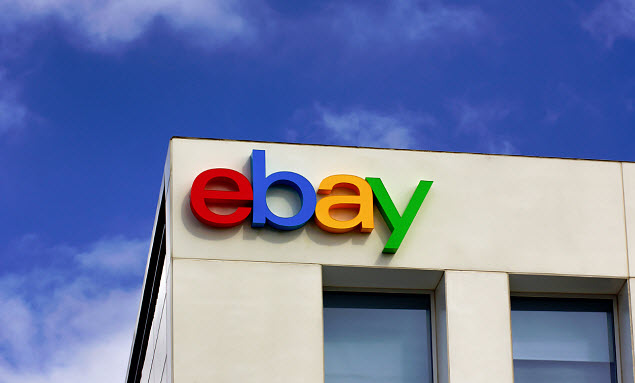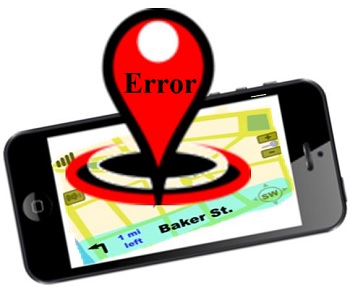The massive online marketplace is now getting ready to enter into smartphone advertising in a whole new way.
A new mobile ad network from eBay is slated to launch within the last quarter of this year, giving marketers the opportunity to place their messages within the company’s app.
This is going to provide marketing firms with an opportunity to reach a tremendous number of consumers.
It is estimated that there are around 4.6 million people that use eBay’s mobile app every day. The ability to place a mobile ad in front of those consumers could present a considerable opportunity to advertisers. According to eBay on a new page that it has created on its own website, “For the first time, we’re giving you the opportunity to connect with eBay users throughout their entire shopping journey.”
These mobile ad placements will reach consumers right when they are searching for and buying products.
 According to the company’s own stats, users of the eBay mobile app spend an average of 150 minutes on that application every month. Comparatively, the application of the closest competitor (which was not identified on the site) saw only 47 minutes of use in the average month.
According to the company’s own stats, users of the eBay mobile app spend an average of 150 minutes on that application every month. Comparatively, the application of the closest competitor (which was not identified on the site) saw only 47 minutes of use in the average month.
The website stated that advertisers will be able to place their ads to be displayed cross-channel, including a range of different mobile devices such as tablets and smartphones. In order to be able to place the advertisements, eBay is working with Triad Retail Media, which is a firm based in St. Petersburg, Florida.
This new network is designed to help marketers to be able to improve the targeting of their ads as the eBay app requires its users to log in, which means that the app is able to track the behavior of the user within that app. This helps the company to be able to ensure that the mobile ad options selected for a given user are likely to be relevant to that individual. This, according to the head of display advertising at eBay, Stephen Howard-Sarin. He explained that “We know what these people bought, what they looked for, what they want to buy,” and that “We know exactly who the users are, so we know that the targeting will be relevant.”
Once more, the geography test appears to have been failed by the device manufacturer.
Geography was clearly not one of the best classes that Apple Maps took in elementary school, as it has yet again revealed that it has placed certain locations on the world map in the wrong spots.
The mapping service has been especially creative when it came to the placement of certain Canadian cities.
For example, at the moment Apple Maps has relocated the largest city in Canada, Toronto, to the place that actually belongs to the country’s capital, Ottawa. Ottawa has been moved to Toronto’s old location on the edge of Lake Ontario. Though this has caused some to chuckle and others to roll their eyes, when they already know that these positions are not where the cities belong, it does bring to mind some of the disasters that were caused by a previous version of the app that led certain people into rather dangerous and unfortunate circumstances while following their iPhone GPS directions.
Apple Maps has also changed the position of a number of other cities and has misspelled others.
 For instance, to continue with the examples on the Canadian map, the city of Edmonton was inaccurately placed to the west of Calgary, in the province Alberta. The apostrophe in the name of the city of St. John’s, the capital of Newfoundland, was missing.
For instance, to continue with the examples on the Canadian map, the city of Edmonton was inaccurately placed to the west of Calgary, in the province Alberta. The apostrophe in the name of the city of St. John’s, the capital of Newfoundland, was missing.
Since screen caps of these inaccurate maps from the mobile app started appearing on media sites across the internet, the offending maps have since been taken down. This was not before a new series of jabs have been made toward Apple, which now has a growing reputation for providing consumers with maps and directions that are riddled with errors.
These recent errors are, however, nowhere near the magnitude of the mistakes that were built into the original Apple Maps software that was launched in 2012 in order to replace Google Maps as the default service of that nature in iOS based devices. The problems were profound enough, at that time, that CEO Tim Cook rapidly found himself making an apology for the failures of the service and providing directions that would help the company’s mobile device users to be able to go back to using rival services.
 According to the company’s own stats, users of the eBay mobile app spend an average of 150 minutes on that application every month. Comparatively, the application of the closest competitor (which was not identified on the site) saw only 47 minutes of use in the average month.
According to the company’s own stats, users of the eBay mobile app spend an average of 150 minutes on that application every month. Comparatively, the application of the closest competitor (which was not identified on the site) saw only 47 minutes of use in the average month.
 For instance, to continue with the examples on the Canadian map, the city of Edmonton was inaccurately placed to the west of Calgary, in the province Alberta. The apostrophe in the name of the city of St. John’s, the capital of Newfoundland, was missing.
For instance, to continue with the examples on the Canadian map, the city of Edmonton was inaccurately placed to the west of Calgary, in the province Alberta. The apostrophe in the name of the city of St. John’s, the capital of Newfoundland, was missing.